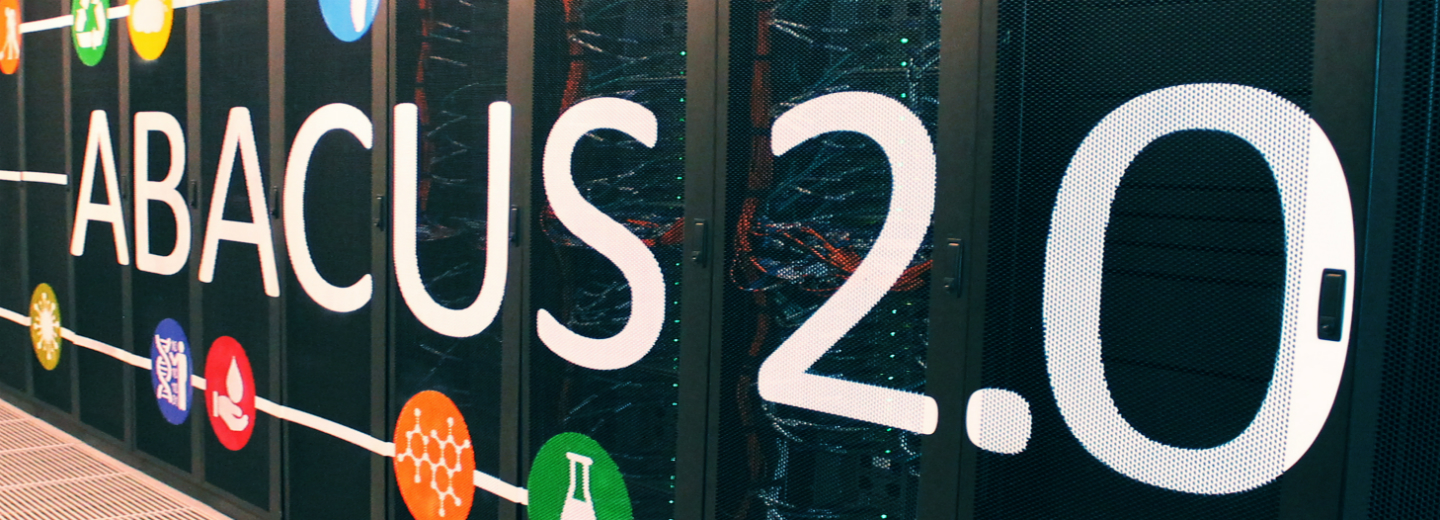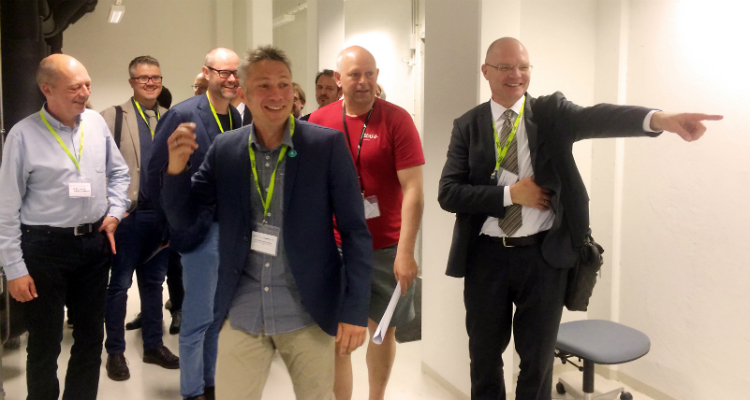
Abacus in new clothes at National Supercomputing Day at SDU
Abacus 2.0 got its glad rags on for the HPC event at SDU. The first National Supercomputing Day held on May also featured entertaining speeches and professional workshops.
By Henrik Gautier, henga@sdu.dk, 6 June 2016.
"The day should also provide some good opportunities for networking," said SDU's CIO and Director for HPC in DelC Kurt Gammelgaard Nielsen when in his capacity as toastmaster he presented the day's programme at the National Supercomputing Day at SDU.
The challenge to the approximately 70 participants was loud and clear before Kurt Gammelgaard Nielsen handed over to "someone who has played a large part in making sure that the High Performance Computer Abacus 2.0 is sitting in the basement under SDU."
Historical computer
Vice-Chancellor of SDU Henrik Dam responded with a good-humoured speech. He referred to the year 1997 and a battle between man and machine when the Russian chess grandmaster, Garry Kasparov, lost to IBM's chess computer, Deep Blue. As well as the entertaining anecdote, the vice-chancellor emphasised that it is through the calculation powers of supercomputers, that today's breakthroughs in both science and industry are possible, and that with Abacus 2.0 we are making sure that Danish researchers can be part of the development.
"It is important that both universities and industry can procure employees who are qualified and trained in working with big data and supercomputers," said Henrik Dam. He continued:
"Here in Europe, there is still a lack of qualified applicants for jobs requiring competences in High-Performance Computing. That is why we have to be better at integrating High-Performance Computing into the syllabuses on our academic study programmes. Students have to learn to programme, and they need to have access to supercomputers. Abacus 2.0 and the other national supercomputer facilities are the first step towards creating greater national awareness about strengthening competence development in High-Performance Computing for the benefit of our research institutions and for the benefit of our companies," said Henrik Dam.
The National Supercomputing Day was also the inauguration of the upgraded Abacus 2.0. The incredibly strong computer cluster moved Abacus 2.0 to a new and better situation in the basements under SDU and at the same time extended it by 192 nodes, so Abacus 2.0 now has a total of 584 nodes (units, ed.). As a result, the HPC is equipped to offer even more calculating power to Danish researchers and companies.
Programming à la granddad
The morning's other key speakers were Hans Müller Petersen, General Director of the Danish Agency for Science, Technology and Innovation; Steen Pedersen, CEO of DeIC; and Professor Jeppe Olsen, AU, member of the Danish eScience Committee. The professor from Aarhus took inspiration from the words of former Russian president Dmitry Medvedev and said in his speech that the British rock band Deep Purple are the greatest, and that supercomputing is of the utmost importance for the world's future. With these two truths firmly established, the professor presented his prediction for the future of Danish supercomputing.
"I'll spare you the details of how programming was done when granddad was young, but educating the next generations is important if we are not to fall behind. We have to introduce parallel coding into high schools," said Jeppe Olsen, who is very enthusiastic about the work being done to develop and strengthen supercomputing in Denmark, but he is also a realist.
"We will never have the biggest computers in the world, but we have to establish and develop a national environment. Then at least we can train," said the experienced chemist. He concluded by congratulating SDU and then adding that he is looking forward to the next upgrade of Abacus 2.0.

Good for the HPC environment
After a tour, the participants at the National Supercomputing Day formed small groups to visit the basement to see how the wonder looks in its new surroundings, and, as well as some refreshments, the guests had technical questions of every kind answered by the technicians who look after Abacus 2.0. In honour of the day, the HPC was "dressed" in new clothes - a new logo for the facility in Odense.
As well as a thorough review of the three national supercomputer facilities: Abacus 2.0, Computerome and Kulturarvsclusteret, the rest of the day unfolded with different presentations and workshops with hands-on exercises. HPC Coordinator Wendy Engelberts from SDU, who arranged the event, was particularly pleased when she could conclude at the end of the day that the very first National Supercomputing Day had been a great success.
"It has been a good day with a packed programme. Strong academic presentations, workshops, good opportunities for participants to network: these are three crucial elements in strengthening the HPC environment in Denmark," says Wendy Engelberts.
Why not Abacus 3.0 - or 4?
Now that Abacus 2.0 has been upgraded and become an even stronger computer than before, some people may wonder why it is called 2.0 and not 3.0. But there is a very simple explanation, if you ask the man who named the HPC.
"2.0 is a part of the computer's name," says former Dean of the Faculty of Science, Professor Henrik Pedersen. He explains:
"Abacus is Greek for 'counting frame' - that is to say, the very first "calculator" we know of, therefore version 1.0. So it was obvious that we should call the supercomputer version 2.0, laughs Henrik Pedersen and adds:
"So Abacus 2.0 is simply its name, no matter how many nodes we get up to."
Henrik Pedersen, who as Dean of the Faculty of Science was part of realising the HPC project at SDU, is among other things COO of data management and Chairman of the National Forum for Research Data Management at DeIC.
Photos: Henrik Gautier/SDU